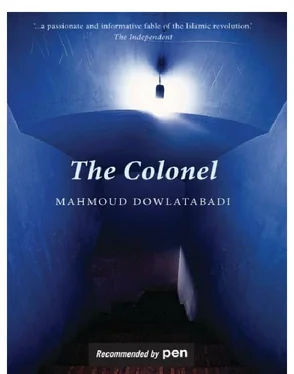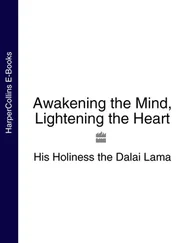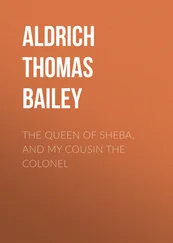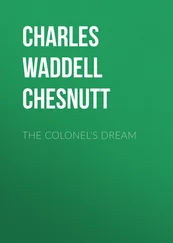The People’s Mujahedin and the People’s Fedayan, the two underground groups that took up arms against the Shah’s regime and also played a leading part in the revolution, were among the first organisations to be targeted and eradicated by the new theocracy. They kept up resistance for a while, but the régime had the masses on its side. In 1988 huge numbers of leftists were rounded up and executed, something that the Shah, even when SAVAK was at its most savage, never did. The revolution ate its own children as, in Persian legend, Rostam killed his son Sohrab.
Farzaneh, the colonel’s elder daughter, is married to Qorbani Hajjaj, who encapsulates the world of deceit and specious dogma. the colonel’s son-in-law is one of those people who always manage to come out on top, whichever way the wind is blowing. Such hirelings will shamelessly cheerlead for whoever happens to be in power, and will do whatever is required to keep themselves in favour. Farzaneh has submitted to this line, even though it is now beginning to frighten her.
Equally adaptable and lacking in principles is the secret policeman, Khezr Javid, whose personal inadequacies drove him into the arms of SAVAK. He was happy to interrogate and torture any number of dissidents under the Shah, and yet had no scruples about throwing in his lot with the new régime to keep his job. Nobody knows for certain how many Savakis, and informers, there were under the Shah, but there were thousands of them, with agents in every government organisation and in private companies. They created an atmosphere of fear and distrust, even within families. The senior ones were educated and urbane, while the torturers were recruited from the unwanted children born in the official brothels.
What makes this novel unique in modern Persian literature is its directness. The author spares nothing and no-one, and flies in the face of all kinds of literary, moral and social taboos, even those that are deemed sacrosanct in Islamic culture. By doing so, he highlights the deep-seated contradictions that have condemned a whole society to failure.
the colonel is a liberal who has taught his children to think for themselves and go their own way, with the result that they end up killed. At the same time, hidebound by conventional morality, he murders his wife because she has impugned his honour by having affairs. This contradiction between the old and new values is the essential Iranian tension today. Iran is a society based on family loyalties yet, after the Islamists seized power, they tried to turn the whole country into a nation of spies: the Supreme Leader demanded that everyone should keep a close eye out among their family and neighbours for anyone who stepped out of line or transgressed against the precepts of shari’a law. On television, he publicly proclaimed a woman who had betrayed her own child as ‘Mother of the Year.’ The methods of Stalin had been visited upon the leftists who had brought about the revolution.
Acknowledgements
I am indebted for help with the translation and with the historical references to a number of Iranian and British friends and colleagues. I am also indebted to Peter Lewis for his tireless collaboration and editing. By the nature of the language, much has inevitably been lost in translation, but I hope that sufficient poetry remains to do justice to the power and feeling of the original.
Tom Patterdale
1
Jangal [jungle] means ‘forest’. Kuchik means ‘little’. There is an allusion here to Kuchik Khan, a famous leader of a revolutionary movement based in the forests of the Caspian coast after WWI, known as the Jangali movement.
2
These ‘hejlehs’ — bridal chambers — are garishly illuminated shrines, erected for forty days at street corners to honour young men who have died unmarried and unfulfilled. During the Iran-Iraq war almost every street in the poorer parts of town had a hejleh.
3
There is a play on words with the name of Parvaneh’s husband. Qorbani also means ‘sacrificial sheep’. Al-Hajjaj ibn Yusef was a draconian 8th century Arab governor, responsible for many deaths, particularly of thousands of pilgrims to Mecca. Written in Persian, Hajjaj can also be read as Hojjaj, pilgrims to Mecca. ‘Qorbani Hajjaj’ can be read as a sheep tied up for sacrifice by a returning pilgrim. Such a sheep would naturally be worried by what is about to happen to it.
4
Like the poisoned shirt given to Hercules unwittingly by his wife, which killed him.
5
Heroes of the Shahnameh: Iradj, Salm and Tur are sons of King Fereydoun, who divides up the known world between them. Incited by Salm, Tur kills Iradj. Manuchehr, the son of Iradj, then kills Salm and Tur in revenge.
6
The great reformer and educator in the reign of Naser ud-Din Shah, assassinated by the Shah’s order in 1852.
7
The prophet Khezr appears in various forms to intervene to rescue those in distress. He drank from the fountain of life to attain immortality. Here, he represents the universal secret policeman, needed by all governments of whatever hue, who survives all political changes. Javid — immortal — is also a name in Persian.
8
Lalezar Avenue in the old days was the most European of the streets of Tehran.
9
In the early 1970s Iranian army special forces worked with the British-officered Sultan’s forces in Oman against the communist incursion from South Yemen into the Dhofar province of Oman.
10
The author is alluding to the ‘west-toxification’ of modern Iranian youth, the title of a book by the same name of Jalal Al-e Ahmad.
11
In Muslim burials, the body is taken out of the coffin and buried only in a shroud.
12
In 1951. Until then, the oil of Iran was in the hands of the Anglo-Iranian Oil Company, which later became BP.
13
Parvaneh means ‘moth’.
14
Rostam, the great Persian hero of the Shahnameh epic, defeated the Turanian champion Ashkabus in single combat. Paridokht was a heroine who fought with Rostam’s son, Sohrab. In the period of Iranian nationalism from the 1920s to the 1970s, progressive nationalist families eschewed the old Islamic names in favour of names of heroes of the Shahnameh .
15
Town in NE Iran, near the Afghan border.
16
i. e. the Caliph Omar, enemy of the early Shi’ites. By way of insult to him, the old outdoor privies were known as ‘the Caliph’s house’, the dirtiest place.
17
The prophet Khezr, by contrast, is believed to follow people who are in danger, to intervene and save them.
18
This recalls the ordeal of Siyavash in the Shahnameh epic.
19
These are districts of Tehran. Salsabil is a fountain of nectar in paradise and Jey means ‘pure’.
20
The Mossadeq period.
21
These minarets are a few miles outside Isfahan and can be made to shake.
22
Westernised Iranians drink tea from a cup.
23
Dating from the Safavid period.
24
In mourning for the death of the Imam Hossein at the battle of Karbala, AD680. It was often said that a number of Palestinians and Lebanese came to join the revolution.
25
Shapour Bakhtiar was prime minister for 30 days in the transition period between the departure of the Shah and the return of Khomeini. He ordered the release of all political prisoners and the dissolution of SAVAK.
26
After the Islamic revolution, the communist Tudeh party decided to publish the names of government informers. SAVAK, created by the CIA after the 1953 coup against Mossadeq, was the equivalent of the KGB.
27
In some remote small towns mourners for the Imam Hossein at Kerbela cover themselves in mud to show their annihilation of self.
Читать дальше












